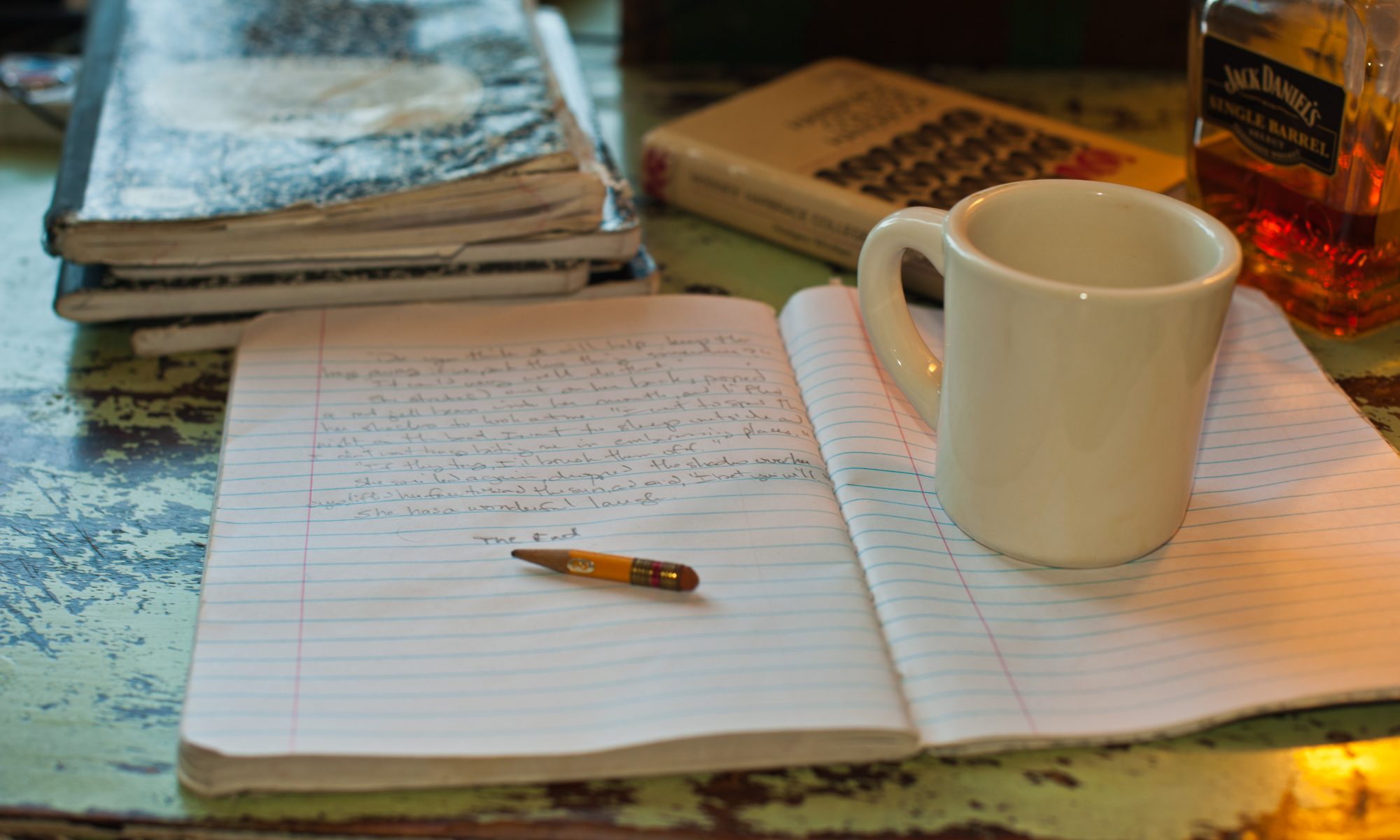In this Writing Journal, I’m going to describe where I get ideas for my books. Starting with the next Journal entry, I’ll be tracking my progress as I work on my next couple of books with occasional trips down rabbit trails as they occur.
An Idea, Any Idea, Used as Inspiration.
The idea for my first published book, A Crimson Grace, came about this way: A long time ago, I decided to write a short story and submit it to Ellery Queen Mystery Magazine. I had no plot or character ideas. I was working as a suit at the time. I went to my secretary and told her I was going to write a short story and asked her to give me one idea about something that should be in the story. She is an artist. She said: “An artist. Or a drawing.”
After thinking about that for only a short time, I started the short story with the discovery of a body of an artist who lived on the beach. She was a friend of the protagonist in the story. He ended up with her sketch pad and in it found a drawing she had made late one night of something suspicious. The night she drew it, a person engaged in the nefarious activity noticed her watching him. At the time he was not in a position to pursue her. He tracked her down and killed her.
The idea of how to use the sketch evolved as I wrote the book, but drawings remain a very important plot point of the novel.
Writers: If you’re looking for plot ideas, ask a friend or family member to name something, anything. Build a story around that idea. Even if the idea will not support a story, making yourself use it to construct a plot may just generate a direction for your book.
Another time I thought about what could my protagonist observe that would end up being a clue. In the midst of casting about for ideas, I got in my car and ran the windshield wiper to clear the condensation off the windshield. I thought about the naturally occurring condensation and decided to find a way the condensation on a windshield of a vehicle could provide a clue. And, I came up with something. I worked on a book in which the clue provided by the condensation was pivotal. I set it aside some time ago and the book is only partially written at this point. It may very well be revised to become a Samuel Locke murder mystery.
I read that Elmore Leonard started developing his book Stick with a vision in his head of a man walking across a bridge into a city while traffic passed by. Leonard did not know the man or where he was walking, but he saw the scene. After he thought about it for a while the man became Stick, recently released from prison and walking in Florida. That walk across a bridge evolved into one that is in the first chapter of Stick. The book was a success and made into a movie starring and directed by Burt Reynolds.
Potential Titles
I keep a list of potential book titles that pop into my life from many sources. For instance, some time ago, to pass the time while commuting, I came up with the phrase “Chocolate and Champagne.” At the time, I was thinking about trying to write a few romances of the Harlequin Romance novel type. When I mentioned to my mom that I planned to try my hand at that she started sending me boxes of them. I had no idea she was reading them, but every six weeks or so, she’d send me eight or nine. I read one in which the female lead was an entrepreneur owner of some kind of shop (might have been a florist). And that’s all I really remember.
During my thirty-five mile commute in Houston style traffic, I drifted to thinking about small, boutique type shops and what they sell. Chocolate came to mind. And a really nice wine store. And chocolate and wine is a thing. That took me to the bit more alliterative Chocolate and Champagne. Then, thinking about a possible series of romance novels with some kind of theme carried through the title, I started going through the alphabet. The most memorable idea was “Blues and Ballet.” As of today, the title of my most recently published novel is The Blues and Ballet.
The Blues and Ballet did not turn out to be a formula romance novel. I loved the phrase and it stuck with me. Later, after receiving a rejection letter from Harlequin for a proposal with a completely different title which, according to the letter, did not emphasize the sex enough, and while in the midst of writing A Crimson Grace, I started thinking about the next Samuel Locke novel. Using my favorite entry on the proposed title list, I came up with the first line of a book: “I was listening to the blues and watching ballet the night they fed the dead guy to the alligator.” And for the longest, that was all I had. But, from that, followed all the ideas that came together to create The Blues and Ballet.
An aside: A theme of this blog is how ideas are everywhere if you cultivate what you encounter every day for its potential as a part of a story. Coincidentally, it just happened as I was right at this point in composing this blog. I’ve got music stuff on YouTube streaming as I write. Luis Fonzi was just in a video talking. Fonzi composed the biggest song of 2017, “Despacito.” He mentioned how he woke up one morning with the melody and rhythm of the word “despacito” as it is sung in the composition. He said it was so clearly formed that he did research to discover whether he’d simply heard it somewhere. After he decided it was original, the song was written in a couple of hours.
That happens when you practice being open to ideas, when you’ve spent hours putting the moments of your life into the plot (or song) generator of your mind. Things start popping up by surprise. Writers often talk about the mystical ways their characters will take off on their own, behaving in ways the writer never intended or saying things that seemingly come from the experiences and personality of the fictional character independent of the writer. Something in the writer’s brain is working subconsciously in ways unguided and unexpected by the conscious perception.
I mentioned up above that I keep a list of potential titles with absolutely no idea of what a book with that title might be about. I was only half paying attention to what Luis Fonzi was saying but, in the middle of his discussion, he described what happens during the creative process to be a “beautiful madness.” That phrase popped out at me and, before I appreciated the coincidence of it happening in the midst of writing this blog, I grabbed a pen and jotted down “A Beautiful Madness.” It would make a good title. And, while writing this aside, another channel of my brain is running through dozens of potential plots and themes that might be a part of a book titled “Beautiful Madness.” And that, my friends, is an excellent example of what this blog is about.
Now, back to the blog.
Visuals
I am inundated with visuals. In moments where I can contemplate what I’m viewing, memories get stored that are composed in a way that I know I can create a story around them. Being a photographer has trained me to see things as storytelling images, to snap stills from the moving picture that is life. The lonely beauty of a stretch of road during a road trip put a short story into my head. The story was about the loneliness of the driver, a redeeming insight gained from a hitchhiker in need, and the time it takes to drive a length of a long highway in Texas.
I’m thinking about always using one of my photographs on the covers of Samuel Locke novels as an element of branding, at least until Putnam writes me a huge check to publish some and they want to design the cover. I’ve never loved the cover of the first in the series, A Crimson Grace. I was going through my thousands of Texas Coast imagery looking for a possible replacement when I found an image that I thought would make a decent, moody cover, just not for A Crimson Grace. But having that image in the plot generator of my mind and envisioning its use on a cover for a Samuel Locke novel led to the mostly completely formed story of the Samuel Lock story I’m getting back to working on right after finishing this blog, eating lunch, making beds, cleaning the kitchen, taking a shower, and shaving.
I thought about posting the photo here because I like to illustrate my blogs, but I’m going to hold on to it for a cover reveal one of these days.
Other Things of Life
Anything that creates an emotional response in me has the potential of inspiring a story.
The news story about the death of Natalie Finn, a sixteen-year-old starved to death by her mother in middle America suburbia two years ago affected me. I’ve started the personally difficult job of outlining and planning a book based on my response to that horror.
I sing along with the radio. Often, while doing so, I create a fictional rock band in my head. I start visualizing them on stage. I start giving them backstories. My fictional band may become a part of a book concept I’ve been thinking about for decades, a multi-threaded epic story that incorporates dozens of random ideas and becomes an allegorical story of the life of a city and its people. Yes, I agree it sounds hoity-toity, so much so that it intimidates me to the point of, so far, failing to make much of a serious start on it.
Visuals, stories, conversations, memories, newscasts, song lyrics, landscapes, all the curiosities of life—each is a potential plot.
The next Writing Journal blog will start the story of my story. I’ll blog about the day to day process of writing my current works in progress.

